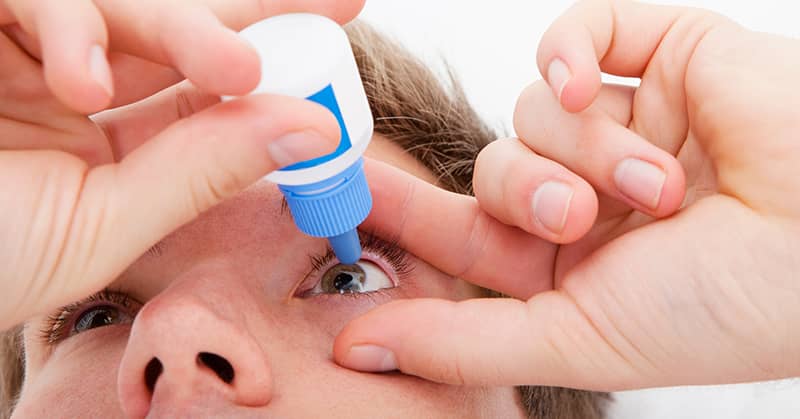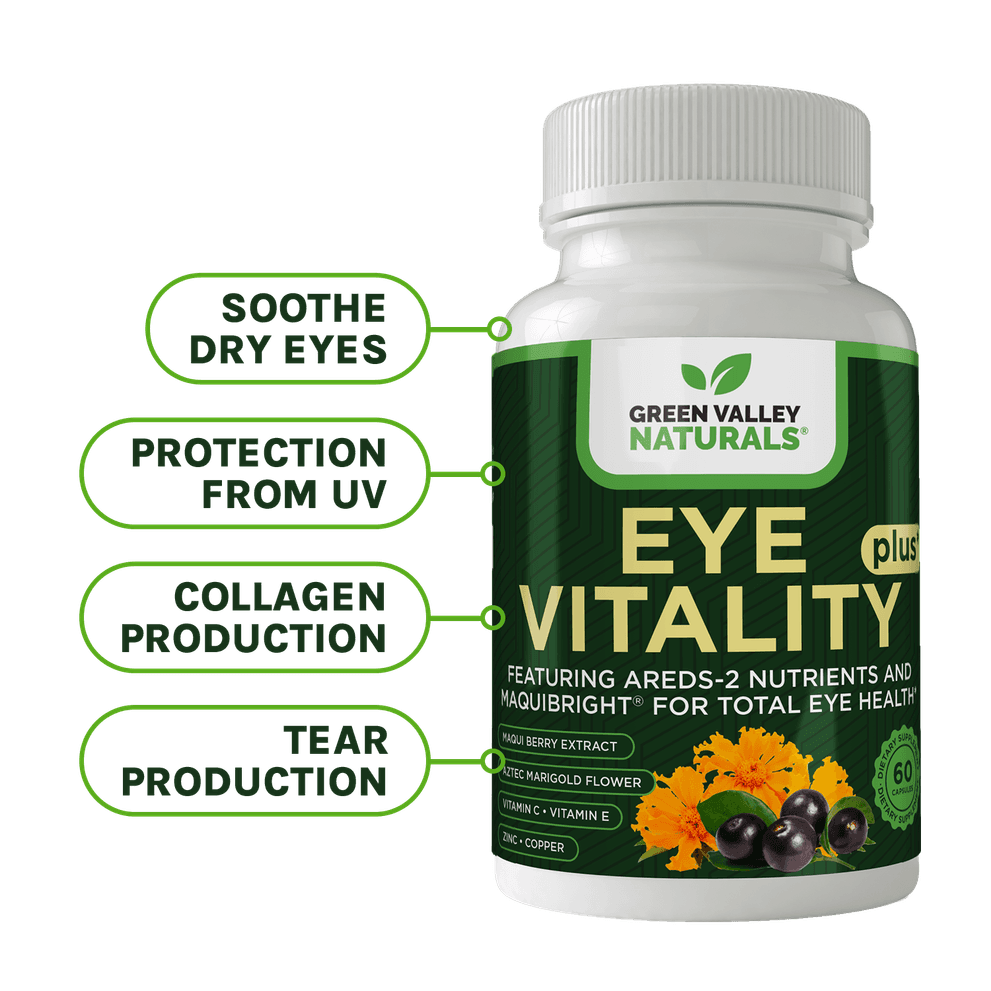
Over the last decade the situation has grown worse because of the aging population, the growth in screen use, and the American diet deteriorating even further.
Fortunately, scientists are coming up with new solutions that don’t require taking drugs. Here’s what you can do…
What is dry eye disease (DED)? It’s a simple question but the answer is anything but.
"It's an epidemic now," said Stephanie Marioneaux, an ophthalmologist in Chesapeake, Virginia. And that was back in 2013. At one time her dry eye patients were mostly postmenopausal women but not anymore - now, it’s affecting everyone.
Tears are produced from three layers - an oily outside layer produced by the meibomian gland; a watery middle layer produced by the lacrimal gland; and an inner mucus layer produced also by the lacrimal gland as well as goblet and apical cells.
These layers make up the tear film.
Dry eye disease is a spectrum of eye conditions
In 1995 DED was described as a disorder of the tear film caused either by a lack of tear production or excessive tear evaporation. Regardless of the cause, this damages the surface of the eye, resulting in symptoms of eye discomfort.
Back then it was thought of as a single disease.
In 2007 the definition was expanded to include visual disturbance symptoms. This changed again in 2017 when a panel of experts came up with a new definition for DED. Then DED came to be recognized as a spectrum of disease.
DED became defined as a multifactorial disease of the surface of the eye characterized by tear film instability and excessive tear evaporation. This leads to inflammation and damage to the surface of the eye. In addition, abnormalities in neural pathways within the nervous system also play a role.
Even before the new definition there was no agreed diagnosis based on symptoms, and no single validated diagnostic test or combination of tests to confirm a diagnosis of dry eye.
A diagnosis is often made by examining the eye surface using an instrument called a slit lamp. This provides a magnified image of the eye surface, eyelids, and other areas of the eye.
As well as looking at tear stability and tear production, the eye surface is stained with drops to evaluate the tear film and highlight areas of damage.
However, the results of this test may not correspond with a diagnosis of dry eye based on a patient’s symptoms. As a result, the medical literature puts the prevalence of dry eye as anywhere from five to 50 percent worldwide. In the U.S.16.4 million adults have received a diagnosis, and an estimated six million more experience dry eye symptoms without a formal diagnosis.
Dry eye affects everyone
Dry eye problems are more prevalent in older adults due to hormonal changes that cause a reduction in the production of tears. Women, especially after menopause, are also more likely to experience dry eye.
Whatever the underlying cause, DED has been described as “a significantly growing health problem worldwide.” And that’s not only due to the aging population. It’s also on the rise among the young, with dry eye symptoms reported in a quarter of high school students and in anywhere from 30 to 65 percent of office workers.
The kind of symptoms people may experience with dry eye include:
· Stinging and burning sensation
· A scratchy or gritty feeling like there’s sand in the eye
· Itching
· Redness
· Stringy mucus around the eye
· Blurred vision, especially while reading
· An abundance of tears – the eyes react to irritation by producing more tears
These symptoms can interfere with reading, watching television, driving, and working. Patients report increasing levels of depression, anxiety, and stress the more serious symptoms become.
Although a precise understanding of what causes dry eye is missing, there are many factors involved that make it more likely to occur. These are:
· Contact lenses – up to four times more prevalent in wearers.
· Visual displays – the dramatic expansion in the use of screen-based devices.
· Environment – air pollution, poor indoor air quality, air conditioning, low humidity, and windy conditions.
· Hormone problems - lower androgen levels in either sex, changes in thyroid hormones, or low insulin levels.
· Hormone replacement therapy – more likely if taking estrogen only.
· Medications - antihistamines, antidepressants, antianxiety drugs, isotretinoin (for acne), beta-blockers and some other medications can disrupt natural oil and water levels in the tear film.
· Essential fatty acid deficiency – these play an important role in eye surface health and are commonly deficient in the diet.
If you’re suffering, there’s hope
The good news is that each of the common causes behind dry eye are modifiable, so if you suffer, address each factor as it applies to you. For example, wear contact lenses for fewer hours each day; take breaks from screens and blink frequently when you do use them; improve indoor air quality with houseplants; use a humidifier; wear wraparound sunglasses to counter dust and wind; and speak to your doctor about hormone status and any medications you take that could impact the eyes.
In addition, one factor that’s especially important because it not only affects the eyes but our overall health, is diet.
An international group of eye experts wrote: “Accumulated evidence over the past decade has shown a potential benefit of essential fatty acid (EFA) supplementation on dry eye. EFAs may play an important role in ocular surface heath and DED treatment.”
The best approach is to add to your diet more healthy foods that contain alpha linolenic acid (a type of omega-3’s), found in nuts and seeds. At the same time, you should reduce your consumption of processed foods as they contain high levels of vegetable oils. These have excessive amounts of denatured linoleic acid, a very unhealthy form of fatty acids. In addition, as the expert group suggests, omega-3 supplements could be very helpful.
Vitamin A is also vital for maintaining goblet cells and mucins – glycoproteins that make up most of the mucous layer - on the eye surface.
Treatments for dry eye
Although lubricating or anti-inflammatory medicated eye drops are available to treat the condition, not everyone responds well, and many people find they actually cause irritation and discomfort. If this applies to you there are alternative options. These include:
· Hyaluronic acid. The body naturally produces this in the eyes, as well as the skin and joints. It’s a slippery substance that’s good at retaining water and is safe to use in the eyes. Drops with hyaluronic acid are readily available.
· Trehalose. Found abundantly in nature, this sugar acts as an anti-inflammatory agent and has other beneficial properties that support eye health. It’s usually combined in eye drops with hyaluronic acid.
· Manuka honey and royal jelly. The former is taken in the form of drops and the latter orally. A recently published systematic review concluded that “honey-related treatment strategies are an effective and feasible treatment option to improve symptoms and signs in patients with DED.”
· Acupuncture. A review of 21 randomized controlled trials found that the combination of lubricating eye drops with acupuncture was superior to using drops alone.
For those with meibomian gland dysfunction, two new therapies are available:
· Vector thermal pulsation. A device using heat and massage to clear obstruction in the gland. It’s carried out by an eye specialist.
· Intense pulsed light therapy. Using gentle pulses of light to break up the blockage, reduce inflammation and improve oil flow. Four treatments at monthly intervals may be recommended by the optometrist.
A plant found in Chile also looks very promising as a natural treatment to dry eye.
Maqui berry soothes dry eye
Aristotelia chilensis, commonly known as maqui, is a black berry with a high concentration of antioxidants and strong anti-inflammatory activity. It’s been used since ancient times to treat inflammatory problems. Over the last decade a standardized maqui berry extract taken as an oral supplement has been tested in dry eye sufferers.
A pilot study published in 2014 included 13 Japanese people with moderate symptoms. After two months there was a significant increase in tear fluid volume and dry eye symptoms fell considerably.
Another study out of Japan followed five years later. Seventy-four patients aged 30 to 60 with eye dryness, eye fatigue, and who used a visual display terminal for at least four hours a day, took either the extract or placebo daily for four weeks.
A series of before and after tests showed that in the maqui berry group lacrimal fluid production increased significantly in both eyes. Patients taking the extract also reported less eye fatigue and bothersome symptoms compared to controls.
The most recent study was published in April 2023 by eye specialists in India. They randomly assigned twenty patients to take either maqui berry extract or placebo for four weeks.
Compared to the placebo group, patients taking maqui berry extract reported significantly less eye problems and an objective test showed significantly more moisture production.
Researchers also found that levels of pro-inflammatory factors in the tear fluid were also reduced and anti-inflammatory factors increased. The researchers concluded by writing that “consumption of maqui-berry extract resulted in significant improvement of DED signs and symptoms, along with a reduction in ocular surface inflammation.”
Using supplements for dry eye
Today, those who are troubled with dry eyes have more options than ever before.
A combination of natural lubricating and anti-inflammatory eye drops together with a maqui berry supplement is among the best solutions. That’s why Green Valley Naturals has formulated with Maqui Bright®, a patented and potent maqui berry extract. This revolutionary formula works fast to refresh tired, dry eyes… reduce painful glare… and help your eyes adapt faster to lower light conditions.
Best regards,
The Green Valley Team

